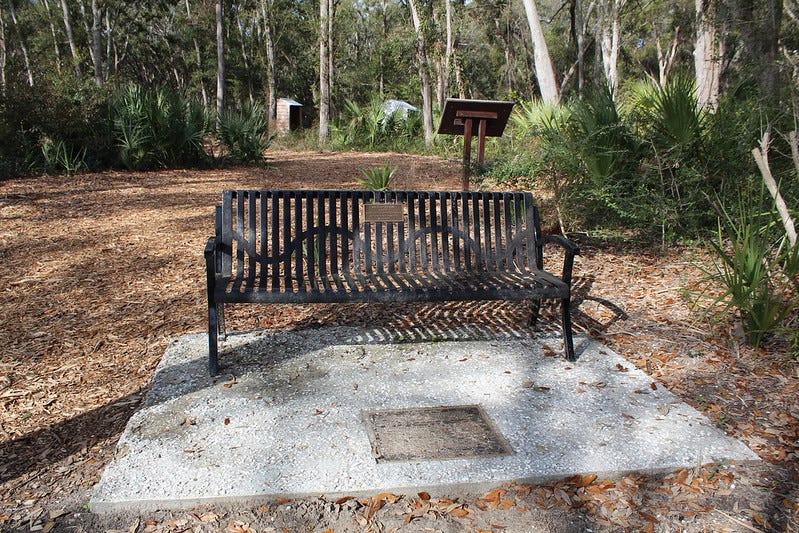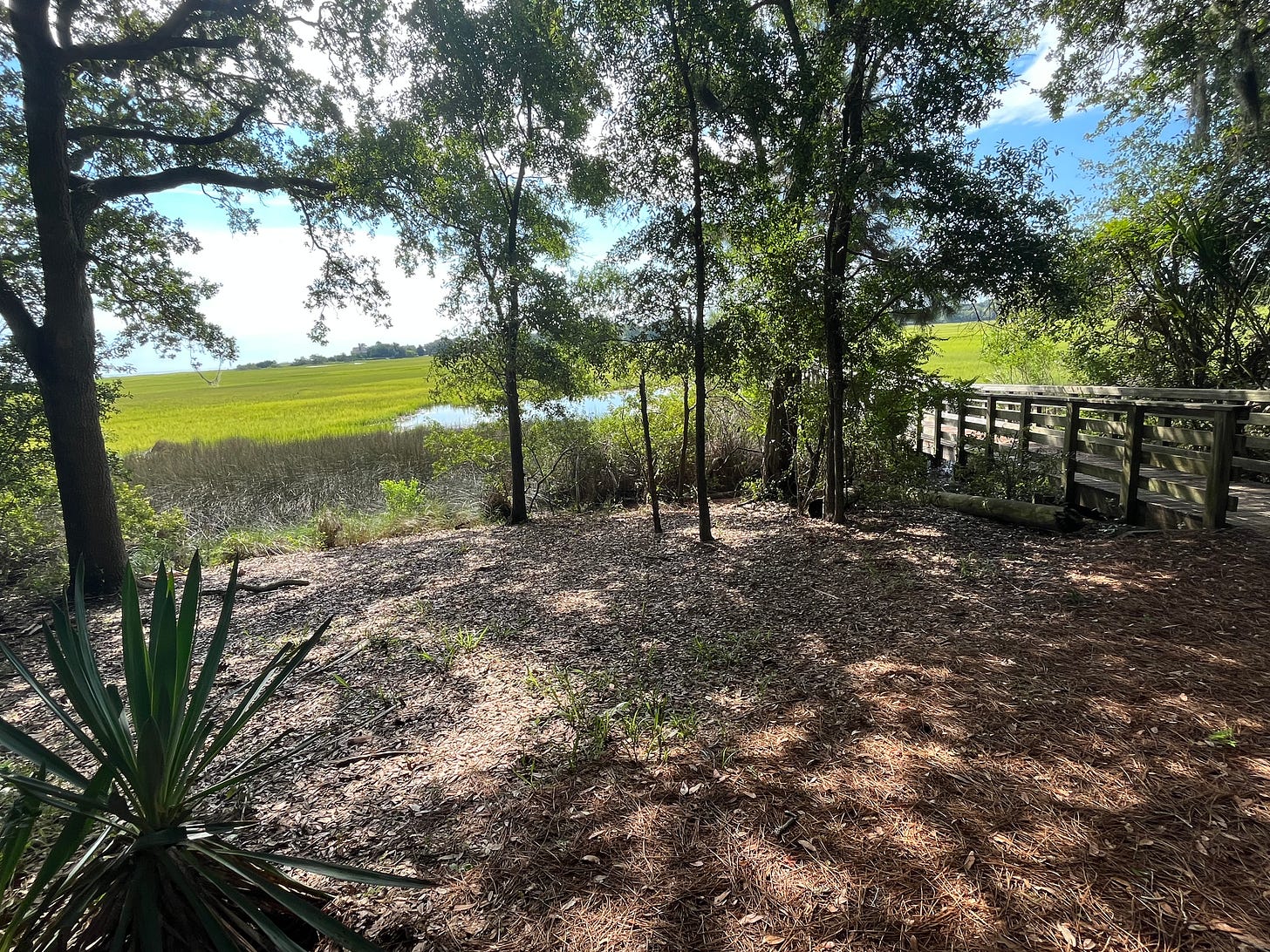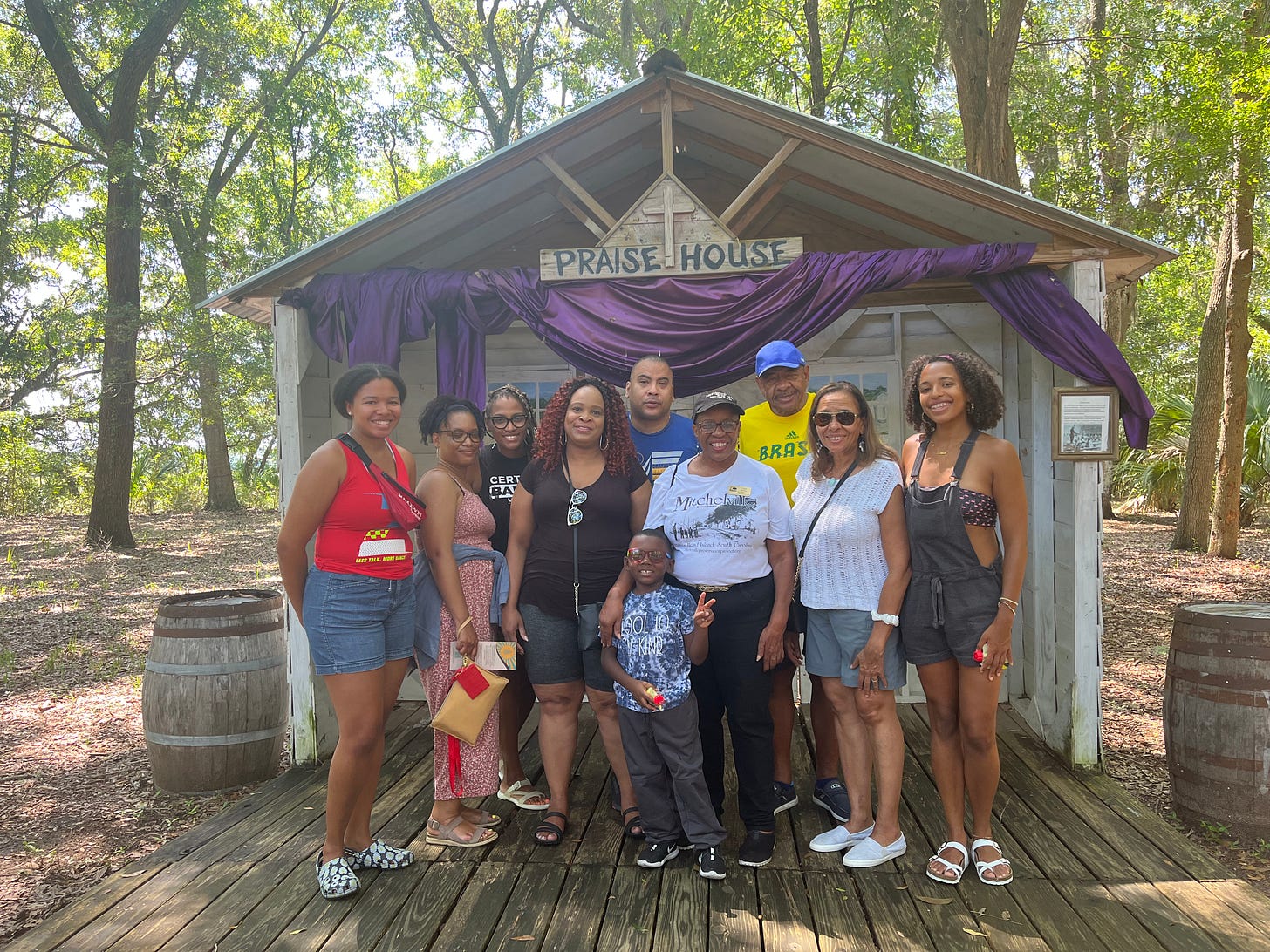
Twice this summer, I’ve been on vacation, and an activity I’ve done connected me with Black authors, both literally and not. On Hilton Head Island, SC, my family and I decided to tour the first self-governed African American town, Mitchelville.
Whenever my family and I travel with all 11 of us, we try and do a tour or something educational. We’re all huge history nerds, especially my mom’s eldest brother. We like to do at least one black-owned tour or visit something related to African American history.
About 25 years before Eatonville, Florida, the first official Black town and Zora Neale Hurston’s hometown, Black people settled in Mitchelville for the duration of the Civil War. After Union troops defeated Confederate soldiers at the Battle of Hilton Head, General Ormsby Mitchel created a town for formerly enslaved folk who had escaped or were left after the battle. Called the Port Royal Experiment, Mitchel divided up the area into 1/4 acre plots and dolled them out to formerly enslaved people. After General Mitchel died, the residents renamed the town Mitchelville in his honor. Residents built homes, grew crops, sold wares to Union soldiers, built schools, and collected taxes without worrying about overseers, plantation owners, and auction houses. In its prime, Mitchelville has 1500 residents. After the war ended, these freed men, women, and children became leaders in other Black communities around the region.
Our guide, Cora, brought us to the marsh from our vantage points for the first part of the tour. We could see toward the sea but were surrounded by salty and muddy trenches, wildlife, and trees. The isolation made the area ideal for Black men, women, and children who wanted to stay far enough away from the fighting to remain safe. However, they could see the canons and guns fire, calling the smoke that pooled around the trees a ring of fire.
Facing an opening in the trees and reeds is a bench. Our tour guide tells us the Bench is Toni Morrison’s. In April 2013, the Toni Morrison Society placed its eighth Bench at Michleville as a part of the Bench by the Road project. Launched in 2006, on Morrison’s 75th birthday, the project creates places for people to reflect on and discuss the realities and legacies of slavery in the United States. The name comes from an interview she sat for with World Magazine after winning the Nobel Prize for Literature in 1988.
"There is no place you or I can go, to think about or not think about, to summon the presences of, or recollect the absences of slaves . . . There is no suitable memorial, or plaque, or wreath, or wall, or park, or skyscraper lobby. There's no 300-foot tower, there's no small bench by the road. There is not even a tree scored, an initial that I can visit or you can visit in Charleston or Savannah or New York or Providence or better still on the banks of the Mississippi. And because such a place doesn't exist . . . the book had to" (The World, 1989).
The society placed the first Bench on July 26, 2008, on Sullivan’s Island in South Carolina, a significant point of entry for the Transatlantic Slave Trade. On the occasion of the Bench’s dedication, Morrison told the New York Times that she liked the idea of an “unpretentious” memorial for everyone, no matter their education or background.
“Well, the bench is welcoming, open,” she told New York Times reporters. “You can be illiterate and sit on the bench, you can be a wanderer or you can be on a search.”
This second South Carolina bench reflects on the end of slavery and the US’s transition into Reconstruction. Surrounded by nature, visitors can reflect on what it means to create freedom. The place reads, “Mitchleville is symbolic of the dreams, knowledge, and determination held by those who had been enslaved and their willingness to contribute to the making of America at the dawn of their freedom.”
There is a Baldwin quote about how Black Americans believe in the tenants of this country more than anyone else. In order to fight and gain their freedom, they must. In action, this looks like Black women overwhelmingly participating in elections to vote for their rights and the rights of other marginalized groups or the plethora of organizing tactics from Black political organizations that have benefited many causes over the years. Or the ways Black food, music, literature, and art defined how America looks, feels, smells, and sounds. To be Black in America sometimes is to believe in and fight for a dream.
Leave a comment and let me know what dreaming and freedom mean to you or if you’ve seen one of the Benches by the Road.
We discussed all this on our tour as birds chirped and deer scampered about. Our guide noted that the forest was calm for our visit. “The crows are not circling and making noise, so the ancestors are happy with your group.” According to Ghanaian mythology, when Crows gather, it’s a harbinger of trickery, bad luck, or death. So something about our family vibes settled the ancestors.
My cousin’s six-year-old son Noah. Came with us on the tour to learn about freedom. My mom was pleasantly surprised by how attentive and well-behaved he was on the trip. He was so good that our tour guide fell in love with him. She’d take him by the hand and have him co-lead our group around the park to learn more about the town and those who inhabited it. What delighted the tour guide the most was Noah’s confidence in who he was, his intelligence, and his capabilities. He needed to let everyone know he was the smartest in his kindergarten. On a tour about Black boys and men learning to dream and realize more for themselves, it was fitting to see a Black child so confident and happy in who he was.
Random Thoughts
📚 I’m speed-reading Yellowface. 1) I love it. 2) I wasn’t expecting to find the book as humorous as it is. RF Kuang is brilliant with dark humor.
🍿 I watched M3gan with my family on the same trip and also was funnier than I was expecting a thriller to be. Maybe my mood is veering toward dark humor these days.
🖼 It’s a bit early but I bought some beautiful Christmas cards at an art fair that I’m excited to use





